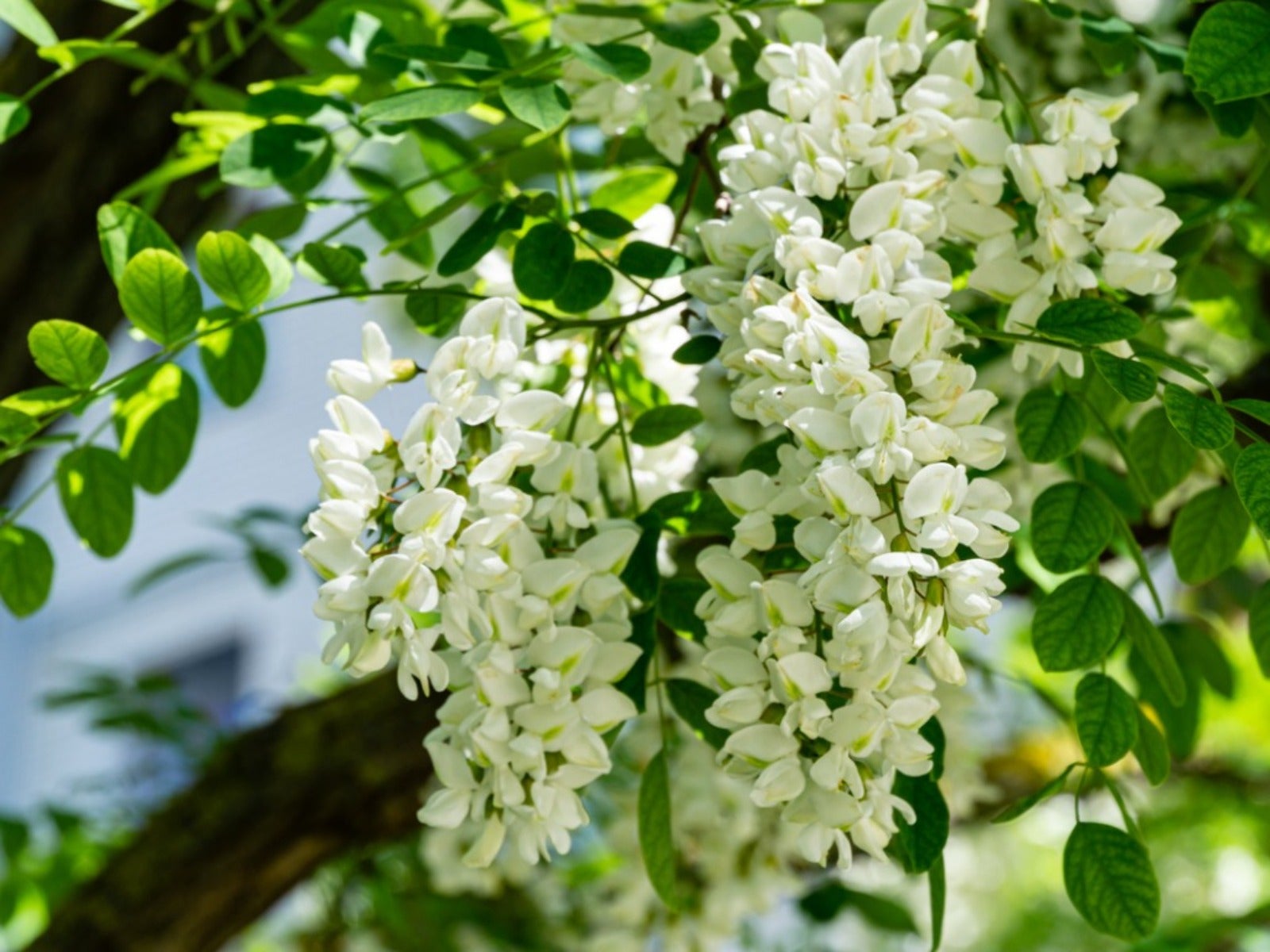Are Black Locust Trees Invasive Even Though They’re Native?


What’s the story with black locust, also known as false acacia? Is it a stunning ornamental or an extremely invasive undesirable? Read on for the curious answer.
Black Locust Tree
It’s hard not to fall in love with black locust (Robinia pseudoacacia). Few trees produce more abundant, beautiful, or fragrant flowers, or afford more pleasing contrast between the upper and lower surfaces of the leaves. It is such an appealing tree, with a massive trunk (to 100 feet tall or 30.5 m) and broad limbs, in stark contrast to the chains of gorgeous white racemes of blossoms and the fluttery, graceful foliage.
The flowers develop 3- to 4-inch (7.6 to 10 cm) brown seed pods. These pods, which resemble dried, flat pea pods, each contain up to 8 seeds, and they are extremely durable. They not only last through the winter, but their durable, impermeable outer coating helps these seeds last for years in the seed bank.
Black locust is also a low-maintenance tree, very easy to grow. But the way that the tree can thrive without human assistance has also turned into a liability. It can outgrow almost any other native species in the area, crowding them out.
Where Is Black Locust Native?
Black locust tree is not a foreign species imported from foreign climes. Rather, it is a native species. The black locust native range is the Southeastern United States, from Pennsylvania to Georgia and west to Appalachia. The trees also are native along the slopes and forest edges of southern Illinois, Indiana, and Missouri.
But the tree has spread from its native range. It has been cultivated across the East Coast as a lumber tree, since its wood is attractive and durable. It was also introduced in residential communities outside of its range both as an ornamental and for soil stabilization. And today, millions of these trees have escaped cultivation and are seen crowding along the sides of highways and growing in thickets in areas including Cape Cod.
Is Black Locust Invasive?
Although the blossoms need pollinators to produce seeds, the flower fragrance makes them extremely attractive to bees and other pollinating insects. But, are black locust trees invasive? Yes, they are extremely invasive, as the U.S. East Coast has found out to its dismay. These trees propagate both by seed and by suckers.
Sign up for the Gardening Know How newsletter today and receive a free copy of our e-book "How to Grow Delicious Tomatoes".
In addition, black locust tree roots alter soil chemistry by fixing nitrogen. This means that the soil can support a higher number of other invasive species even decades after the black locust is taken out. Because of this, it poses a real threat to native vegetation outside of its historic North American range. When it expands into new areas, its shade reduces competition from plants that require sun, and dense clusters create shaded islands with little ground vegetation.
Today, black locust is illegal to sell or buy a black locust tree in the Commonwealth of Massachusetts, where it is not native. But black locust is also classified as invasive in states where it is native, like Indiana, where it has invaded prairie and savanna habitats, and where it was not a native species.

Teo Spengler is a master gardener and a docent at the San Francisco Botanical Garden, where she hosts public tours. She has studied horticulture and written about nature, trees, plants, and gardening for more than two decades, following a career as an attorney and legal writer. Her extended family includes some 30 houseplants and hundreds of outdoor plants, including 250 trees, which are her main passion. Spengler currently splits her life between San Francisco and the French Basque Country, though she was raised in Alaska, giving her experience of gardening in a range of climates.